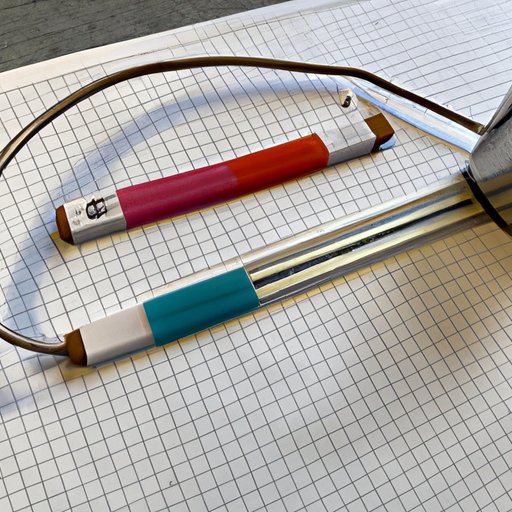Introduction
Calorimetry is the science of measuring heat energy and changes in temperature. It is used in a variety of fields such as chemistry, biology, and engineering. A calorimeter is a device used to measure these changes in temperature and quantify the amount of heat involved in a reaction or process. This article will provide an in-depth look at how a calorimeter works and its everyday applications.

Explaining the Physics Behind How a Calorimeter Works
To understand how a calorimeter works, it is important to understand the physics behind heat transfer. Heat is a form of energy that is transferred from one object to another due to a difference in temperature. Heat can be transferred by three different methods: conduction, convection, and radiation. Conduction occurs when two objects are in direct contact with each other, convection occurs when a liquid or gas carries heat away, and radiation occurs when heat is transferred through electromagnetic waves.
These principles of heat transfer can be applied to calorimetry. When two objects with different temperatures come into contact with each other, heat is transferred from the hotter object to the colder object until they reach the same temperature. The amount of heat transferred is determined by the laws of thermodynamics. The first law states that the total amount of energy in a system remains constant, while the second law states that the entropy of the universe increases over time.

Uncovering the Inner Workings of a Calorimeter
A calorimeter is made up of several key components. The most important component is the container, which is usually made of metal or plastic and has a lid to keep all the heat inside. Inside the container is a thermometer that measures the temperature of the system. There may also be a stirrer to mix the contents of the container, and a heat source to increase the temperature if needed. Other components such as insulation and radiators can be added to the system to control the rate of heat transfer.
There are several types of calorimeters, each designed for a specific purpose. Bomb calorimeters are used to measure the energy released from a combustion reaction, while differential scanning calorimeters measure the heat capacity of a material. Other types of calorimeters include adiabatic calorimeters, calorimeters for measuring enthalpy of formation, and isothermal calorimeters.

A Guide to Using a Calorimeter in the Lab
Using a calorimeter in the lab requires several steps. First, the calorimeter must be prepared by filling it with the appropriate solution and ensuring that all components are securely attached. Next, the temperature of the system must be measured and recorded. Then, the heat source is activated and the temperature is measured again. Finally, the change in temperature is calculated and the amount of heat released or absorbed can be determined.
Applying Calorimetry to Everyday Life
Calorimetry is used in many everyday applications. For example, it is used to measure the energy content of food, the efficiency of engines, and the heat capacity of materials. Calorimetry can also be used to determine the melting point of a substance and the effectiveness of insulation materials. Knowing the exact amount of energy released or absorbed in a reaction or process can help scientists and engineers create more efficient products and processes.
In addition to its practical applications, calorimetry also has many benefits. It allows us to better understand the physics of heat transfer and thermodynamics, as well as the properties of various materials. Calorimetry is also a relatively inexpensive and easy way to measure the energy content of substances.
Conclusion
Calorimetry is a powerful tool for measuring heat energy and the changes in temperature. It relies on the principles of heat transfer and thermodynamics to determine the amount of energy released or absorbed in a reaction or process. Calorimeters consist of several components including a container, thermometer, stirrer, and heat source. They are used in a variety of fields and have many practical applications as well as benefits.
In conclusion, calorimetry is an essential tool for understanding the physics of heat and energy. By studying how a calorimeter works and applying it to everyday life, we can gain a better understanding of the world around us.
(Note: Is this article not meeting your expectations? Do you have knowledge or insights to share? Unlock new opportunities and expand your reach by joining our authors team. Click Registration to join us and share your expertise with our readers.)
